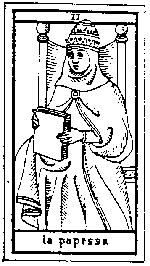THE
USE OF THE I CHING
These
ideograms have come down to us surrounded with a aura of magic,
and today, they are used above all in the effort to discover the
secrets of the present and to foretell the future by a kind of
divination.
In the past, however, this use of the I Ching was never more than
a secondary function performed by this great map in the culture
and life of the Chinese people. They considered it in fact to
be a map and, just as with any map, they used it to go to places.
(They used it like a "translator")
They
believed that all compound entities (the human body, the stars,
the plants, etc.) were given their particular charac ter by
the interrelationship of the Ying and the Yang and that their
structure was represented by the overall arrangement of the
64 hexagrams. According to the Taoists, moreover the single
aspects of each entity (that particular human body, that star,
that plant) were capable of being expressed (in their particularity)
by a certain hexagram which could indicate exactly which sequence
of Ying and Yang polarity had produced the particular nature
of that particular entity.
From this idea, the use of the I Ching as an instrument to
translate the differences among the various aspects of a compound
entity, was born the entire theoretical apparatus of Chinese
medicine. |
 |
Legend
tells us the story of a prince who, afflicted by a terrible neuralgia,
decides to go hunting to distract himself from the pain. During
the hunt, a cousin of the prince, by accident, hits the prince
in the heel with an arrow and, all of a sudden, the prince's pain
disappears.
Thus was born the concept of acupuncture. On the basis of the
theory of the Ying and Yang, Chinese physicians constructed a
description of the human body and of the relationship among the
various organs: they discovered little canals that reach all parts
of the body carrying vital energy, and they interpreted illness
as the cause of an imbalance of the 2 polarities of energy. Illness
is an excess of Ying or Yang; physicians, by placing needles,
performing massages and by burning small areas of the body (MOXA),
in particular points (along the canals in which flow the Ying
and the Yang) tried to re-establish the balance and the good circulation
of the energies. The big problem for Chinese physicians, other
than that of determining the proper point of intervention, (and
of discovering the various effects produced by the various punctures
or plants) was that of arriving at a proper diagnosis of the type
of energic imbalance that was the cause of any particular illness.
It
took hundreds of years for the Chinese to develop a complex picture
of the human body and certainly they had to verify in practice
thousands of hypotheses. In any case, the basic outline for their
research was provided by the I Ching. They used it to decide what
it was they had to look for, and as a convenient tool for organizing
their discoveries and conclusions.
On the basis of the 64 hexagrams, they constructed a series of
theories, the relationships among organs, the proper distance
between puncture points, and the exchange of energies that took
place between various parts of the body. Each discovery came to
be classified as an energy phenomenon in and was expressed by
one of the 64 symbols of the I Ching. The fact that best exemplifies
this relationship between Chinese medical practice and the I Ching
is the way in which the ancient physicians arrived at a diagnosis
and how they decided the best cure for any given patient.
In
order to understand this system we must recall first of all that,
as has been said, the Chinese believed that there was an absolute
correspondence between macrocosm and microcosm, and from this
belief they derived the idea that, knowing the essence of any
particular part of an entity, one can arrive at the essence of
the whole to which the particular belongs, thus they placed at
the centre of their diagnostic system (that included as well the
observation of all the particularities of the appearance of the
individual) the taking of the patient's pulse.